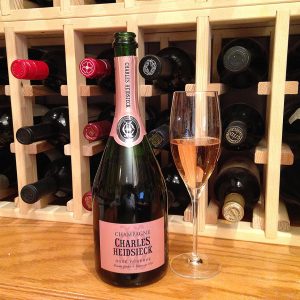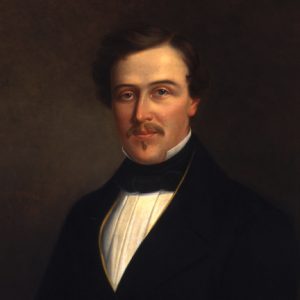Light, luminescent pink rose color; delicate nose of peach, strawberry, flowers; subtle peach, raspberry, strawberry on the palate;
delicate and delicious, persistent tiny bubbles, fresh, exceptionally clean, precise, refined. Dry, long finish with some bread and almond notes. Good, cutting acidity.
The base wine is a blend of meunier, chardonnay, and pinot noir; 80% comes from the year’s harvest and 20% from reserve wines of chardonnay and pinot noir. All are vinified individually in stainless steel vats. Some 5-6% of the wine is vinified as red to add red fruit scents and flavors, achieve the rosé color, and add body weight that contrasts enchantingly with the delicate flavors. The wine essentially is Heidsieck Brut Reserve Champagne (a dry white sparkling) with a dose of red pinot noir. The blended wine matures in bottle for three years in Heidsieck’s legendary chalk caves (crayères).
Charles Heidsieck is among the royalty of Champagne, with a lineage reaching back to the 1850s. Charles Heidsieck—the actual person—was an early leader in exporting Champagne, including to America. The house has fallen on tough times at times, but now is solidly back on its feet. In good times and not-so-good times, the winery’s world-historical-site chalk caverns allow for exceptional aging—a long-time hallmark of Heidsieck offerings. If you want to experience the difference between Champagne and sparkling wine, Charles Heidsieck is the place to go, and they have entry-level offerings for around $50. This is shelf or two above entry-level, but still gets you into world class bubbly for less than a Benjamin. You want to move past that, Heidieck can meet you on that level, too. Heidsieck might be thought of as Dom Pérignon without the inflated price, and often is better Champagne not just a better value. $78-80
Charles Heidsieck website
Second photo: Charles Heidsieck


